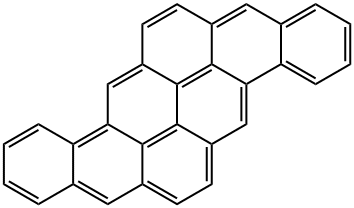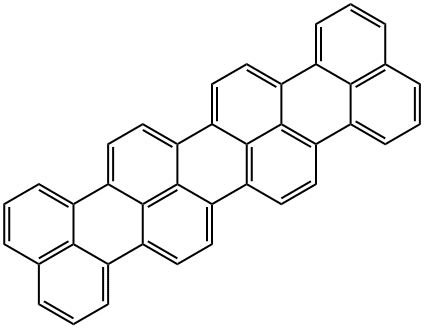Dibenz[a,h]anthracene , Analysis standard , 53-70-3
Synonym(s):
1,2:5,6-Dibenzanthracene
CAS NO.:53-70-3
Empirical Formula: C22H14
Molecular Weight: 278.35
MDL number: MFCD00003708
EINECS: 200-181-8
| Pack Size | Price | Stock | Quantity |
| 10MG | RMB364.80 | In Stock |
|
| others | Enquire |
PRODUCT Properties
| Melting point: | 262-265 °C(lit.) |
| Boiling point: | 524 °C(lit.) |
| Density | 1.282 g/cm3 |
| vapor pressure | 2.78 x 10-12 mmHg at 25 °C (de Kruif, 1980) |
| refractive index | 1.8120 (estimate) |
| Flash point: | -18 °C |
| storage temp. | room temp |
| solubility | Soluble in petroleum ether, benzene, toluene, xylene, and oils (Windholz et al., 1983). |
| form | Solid |
| color | Light yellow to Yellow |
| Water Solubility | 2.2ug/L(25 ºC) |
| Merck | 14,3007 |
| BRN | 1912416 |
| Henry's Law Constant | 1.70 x 10-6 atm?m3/mol at 25 °C (approximate - calculated from water solubility and vapor pressure) |
| Stability: | Stable. Combustible. Incompatible with strong oxidizing agents. |
| InChIKey | LHRCREOYAASXPZ-UHFFFAOYSA-N |
| CAS DataBase Reference | 53-70-3(CAS DataBase Reference) |
| IARC | 2A (Vol. Sup 7, 92) 2010 |
| EPA Substance Registry System | Dibenz[a,h]anthracene (53-70-3) |
Description and Uses
1, 2:5, 6-DIBENZANTHRACENE is a crystalline aromatic hydrocarbon. It is a component of coal tars, shale oils, and soots (IARC, 1985) and has been detected in gasoline engine exhaust, coke oven emissions, cigarette smoke, charcoal broiled meats, vegetation near heavily traveled roads, and surface water and soils near hazardous waste sites. It is a kind of carcinogenic compound, and thus being mainly used for the research purpose. For example, in biological research, it is a mutagen used to induce tumorigenesis.
There is no report on the common use of dibenz[a,h]anthracene and its commercial production.
Safety
| Symbol(GHS) |   GHS08,GHS09 |
| Signal word | Danger |
| Hazard statements | H350-H410 |
| Precautionary statements | P201-P273-P308+P313 |
| Hazard Codes | T,N,F |
| Risk Statements | 45-50/53-67-65-38-11-52/53-36/37/38 |
| Safety Statements | 53-45-60-61-62-26 |
| RIDADR | UN 3077 9/PG 3 |
| WGK Germany | 3 |
| RTECS | HN2625000 |
| HS Code | 2902.90.9000 |
| HazardClass | 6.1(b) |
| PackingGroup | III |
| Hazardous Substances Data | 53-70-3(Hazardous Substances Data) |
| Toxicity | LD50 (intravenous) for rats is 10 mg/kg (Patnaik, 1992). |

![Dibenz[a,h]anthracene](https://img.chemicalbook.com/CAS/GIF/53-70-3.gif)


![TETRABENZ[A,C,H,J]ANTHRACENE](https://img.chemicalbook.com/CAS/GIF/215-11-2.gif)
![Hexabenzo[bc,ef,hi,kl,no,qr]coronene](https://img.chemicalbook.com/CAS/GIF/190-24-9.gif)